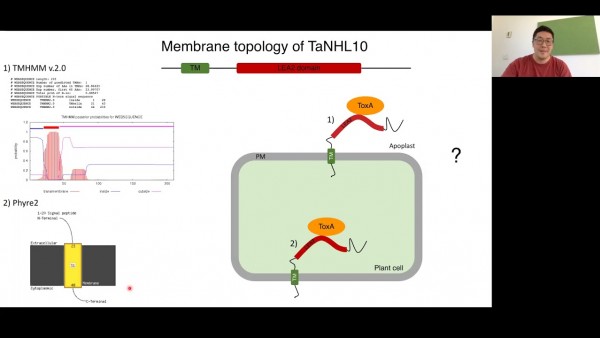PS Webinar Series: The necrotrophic effector ToxA from Parastagonospora nodorum interacts with wheat NHL proteins to facilitate Tsn1-mediated necrosis
Abstract - The wheat necrotrophic fungal pathogen, Parastagonospora nodorum, secretes effector proteins to manipulate host immunity and promote successful infection. One of the major determinants of the disease is ToxA effector protein, which causes cell death in the presence of wheat susceptibility gene Tsn1. However, the molecular mechanisms underpinning this interaction and resulting cell death remain unclear. In this seminar, I will present my research on elucidating the molecular mechanisms of ToxA effector in necrosis. In this study, I applied independent and complementary approaches to identify wheat proteins that interact with ToxA effector. My results showed that ToxA targets an integral membrane protein of wheat (TaNHL10) and this interaction occurs in the extracellular space of the plant. Further we demonstrated that the interaction between ToxA and TaNHL10 is required for Tsn1-mediated cell death via mutagenesis studies of the effector. This indicates that TaNHL10 is a linking protein between ToxA and Tsn1 indirect interaction and is involved in Tsn1-mediated necrosis. This research also advances our understanding on how ToxA induces cell death during infection and further highlights the importance of host cell surface interactions in necrotrophic pathosystems.
Biography - Bayantes received his PhD from Middle East Technical University in Turkey. Following this he started his postdoctoral research in the laboratory of Prof. Peter Solomon at Research School of Biology, ANU. His postdoctoral research focuses on understanding the function of necrotrophic effector ToxA and its interaction with wheat transmembrane protein TaNHL10.






